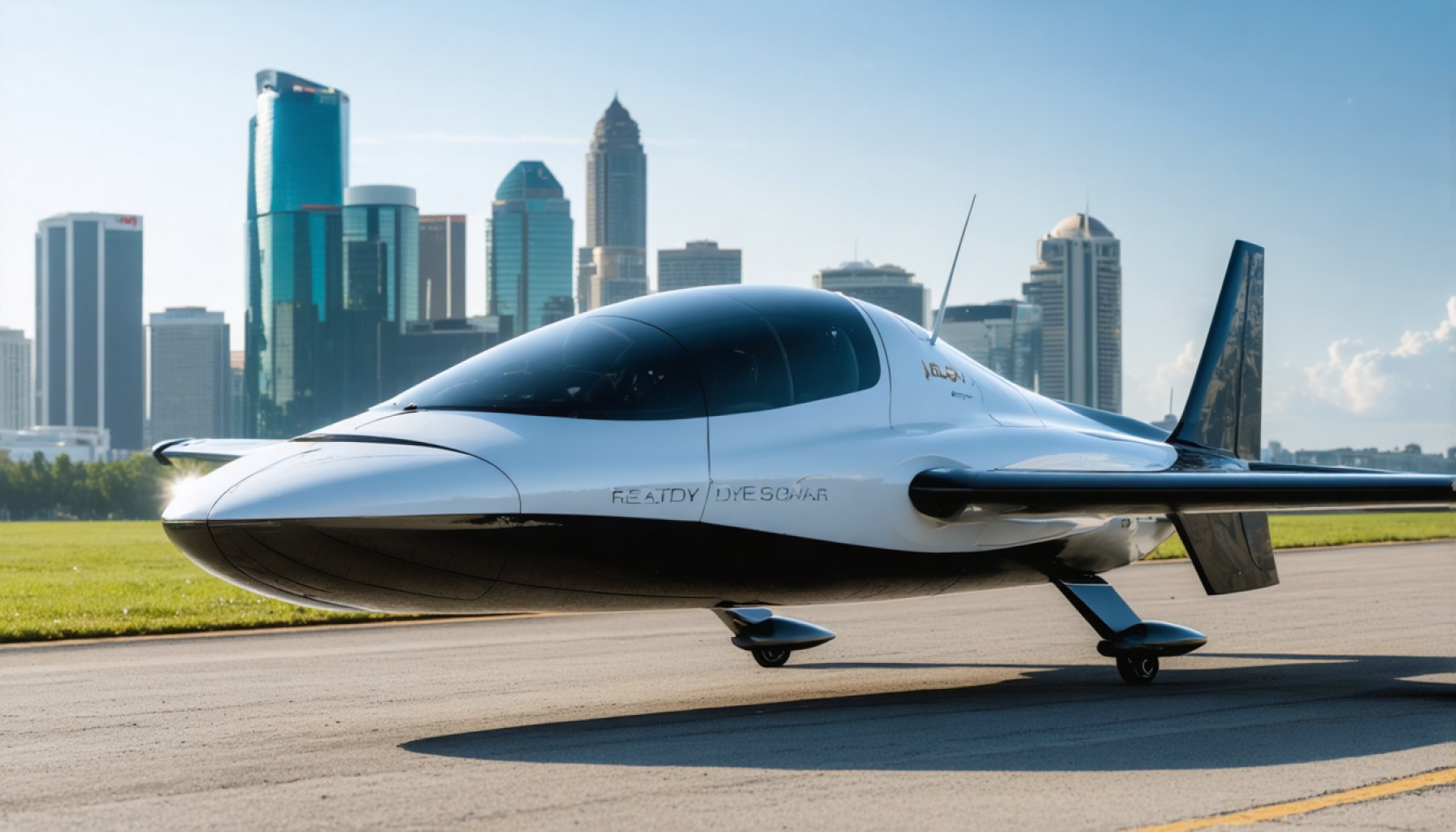
- Orlando plans to integrate flying cars into its infrastructure by 2028, transforming the city into a hub of innovation and technology.
- The vision includes airborne taxis that offer quick and efficient travel, bypassing traditional traffic congestion.
- Local engineers and city planners are addressing challenges such as airspace regulations, safety measures, and infrastructure integration.
- This initiative aims to revolutionize urban commuting and redefine city exploration through a three-dimensional travel solution.
- The project symbolizes the spirit of human innovation and the pursuit of transforming futuristic dreams into reality.
Imagine glancing skyward in Orlando and seeing a bustling scene of futuristic vehicles zipping across the azure sky. This once-distant dream, reminiscent of the animated world of the Jetsons, edges closer to reality with an ambitious vision of embracing flying cars by 2028.
The city, known for its world-famous theme parks, now aims to become a beacon of innovation and technology. Local innovators envision a landscape where airborne taxis whisk passengers over busy highways, bypassing traffic that clogs traditional routes. Picture a commuter’s fantasy—soaring past iconic city landmarks, the sun-drenched beaches mere moments away by air.
The plan isn’t just a whimsical leap into sci-fi territory. Engineers and city planners are hard at work, drafting blueprints, addressing potential airspace regulations, and considering safety concerns. Their task is monumental: ensuring new aerial routes coalesce seamlessly with existing infrastructure while carving out safe zones amidst Orlando’s famed amusement skyline. The elegance of advanced aerodynamics and cutting-edge technology will need to provide both convenience and security.
This forecast isn’t merely about technological evolution; it also taps into deeper aspirations of reshaping urban living. By contemplating a three-dimensional travel solution, Orlando positions itself as a pioneer, prepared to redefine the limits of daily commuting and city exploration.
While the sky may seem the limit, the true takeaway is the relentless spirit of human innovation—the unwavering drive to transcend boundaries and craft marvels once relegated to fantasy. As Orlando sets its sights on a skyward future, it beckons others to dream big and imagine beyond the horizon.
Flying Cars in Orlando: Are We Ready for the Future of Urban Transport?
Introduction
The notion of flying cars has transitioned from the realm of fantasy to a near-future reality, particularly evident in Orlando’s ambitious plan to introduce airborne taxis by 2028. As engineers and city planners work meticulously on this project, there are several key considerations and questions that arise regarding the practical implementation of flying vehicles in urban environments.
1. How-To Steps & Life Hacks for Embracing Flying Cars
To embrace flying cars, both the city and its residents need a phased approach:
– Infrastructure Development: Identify suitable locations for vertiports (takeoff and landing zones) with accessibility to major city areas.
– Public Education: Conduct workshops and informational sessions to educate the public about the new system, safety protocols, and benefits.
– Pilot Programs: Initiate pilot programs with limited routes to gradually introduce the service, allowing for troubleshooting and public feedback.
– Regulatory Compliance: Work closely with the Federal Aviation Administration (FAA) to secure airspace usage rights and adhere to safety regulations.
2. Real-World Use Cases
Flying cars could revolutionize urban transport in several ways:
– Commuting: Reduce travel time significantly by bypassing ground traffic.
– Tourism: Offer aerial tours of Orlando’s landmarks and theme parks, enhancing tourist experiences.
– Emergency Services: Enable rapid transportation in medical emergencies, improving response times.
3. Market Forecasts & Industry Trends
The global Urban Air Mobility (UAM) market is projected to reach over $15 billion by 2030, growing at a compound annual growth rate (CAGR) of around 25% (Market Research Future). This includes advancements in electrically powered vertical takeoff and landing (eVTOL) aircraft, expected to dominate the sector with their sustainable designs.
4. Reviews & Comparisons
Key players in the flying car industry include:
– Joby Aviation: Known for quiet, all-electric air taxis.
– Uber Elevate/Aurora: Developing ridesharing models for flying cars.
– Lilium: Noted for its energy-efficient eVTOL capacity.
These companies vary in design, passenger capacity, range, and technology, making direct comparisons crucial for cities planning to adopt such technologies.
5. Controversies & Limitations
While flying cars promise convenience, they also face challenges:
– Safety Concerns: The risk of mid-air collisions or technical failures could deter public acceptance.
– Noise Pollution: eVTOL vehicles need solutions for minimizing noise, a significant concern for urban areas.
– Regulatory Hurdles: Procuring necessary airspace permissions and regulatory compliance remains complex.
Actionable Recommendations
– Invest in eVTOL Development: Evaluate and partner with emerging eVTOL manufacturers to keep options open for the latest, most efficient aircraft models.
– Community Engagement: Maintain transparent communication with residents, addressing concerns and highlighting benefits.
– Integrate Smart City Solutions: Use data-driven decision-making to optimize vertiport placements and routing for maximum efficiency.
For further reading on urban air mobility and flying cars, visit NASA and FAA.
Conclusion
As Orlando eyes the skies, the potential to redefine urban commuting and tourism is immense. However, embracing this technology requires strategic planning, public education, and continuous innovation. By addressing these facets, Orlando can serve as a model city for integrating flying vehicles, propelling us closer to the futuristic vision once dreamt only in cartoons.



